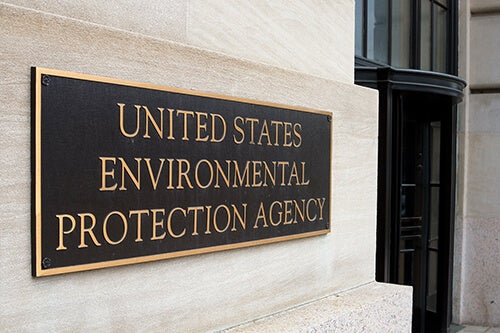Our regulatory subject matter experts help a range of stakeholders solve compelling regulatory challenges associated with supply chain data management. We compile their insights to help educate compliance professionals through content, webinars, and events. Assent’s experts also provide advice directly to clients. Here are the top five questions our Regulatory team has responded to over the past month.
Question: In filling out the Aerospace and Defence Declarable Substances List (AD-DSL), do I need to report on chemicals used to process and clean the parts, or only those that are present in the completed parts themselves?
Valerie Kuntz: It depends on the requirements of your customers or internal stakeholders. While you aren’t always required to provide information about process chemicals or substances when completing the AD-DSL, if this information is available, it’s a good idea to include it. Ideally, you would identify the substance or substances used and where they are leveraged in process. Providing this information helps companies in the aerospace and defense industry understand potential supply chain disruptions if substances cannot be obtained in the future.
Question: My company sells antimicrobial wound dressings. We know the dressings need to comply with the EU Medical Device Regulation (MDR), but we aren’t sure whether their packaging materials must also be compliant. The dressings are sealed in a sterile envelope, then packaged in a paperboard carton along with printed product literature. These cartons are packed in larger cardboard boxes or cases. Does any of this packaging material need to comply with the EU MDR?
Raj Takhar: In general, the EU MDR applies only to medical devices themselves rather than packaging or labels. However, the definition of medical devices subject to the substance requirements, per EU MDR Annex I, Section 10.4.1, includes devices, or those parts thereof or those materials used therein, that:
- “Are invasive and come into direct contact with the human body,
- (Re)administer medicines, body liquids or other substances, including gases, to/from the body, or
- Transport or store such medicines, body fluids or substances, including gases, to be (re)administered to the body.”
The sterile envelopes in which the dressings are originally sealed likely fall into the “transport or store” aspect of this definition. Both the dressings and their immediate sterile envelopes, then, would be considered medical devices and would need to comply with the EU MDR. The other layers of packaging likely would not.
Question: My company contracts with a manufacturer to produce our products. The manufacturer purchases the raw materials (metal castings) from a foundry based on our specifications, then machines them to make our products. We’ve asked the manufacturer for data for several product compliance regulations, but they have told us that because they source their materials based on our specifications and don’t change the materials during the manufacturing process, they will not provide us with declarations. Is this correct?
James Calder: Your manufacturer should be requesting information from the foundry and providing declarations to you for two reasons.
First, the specifications provided to manufacturers in cases like this often allow for significant variation. They may set performance or quality standards rather than material composition requirements, or may set requirements broadly enough that regulatory compliance status can’t be established without additional data. In some cases, multiple specifications may be used and the manufacturer is allowed to choose or switch between them. Specifications don’t automatically mean that a product’s material composition is predefined.
Second, information sharing in cases like this often depends on established commercial relationships. Since your manufacturer is purchasing the materials from the foundry, the foundry’s relationship is with them, as is the economic incentive for the foundry to provide the necessary information.
Question: Are the Registration, Evaluation, Authorisation and Restriction of Chemicals (REACH) Regulation and the EU Restriction of Hazardous Substances (RoHS) Directive referred to by other names or acronyms throughout Europe? My company works with suppliers and customers who speak in French or Italian.
Steve Andrews: In the two languages you mention, the full names of the regulations are:
- EU RoHS (French): DIRECTIVE 2011/65/UE DU PARLEMENT EUROPÉEN ET DU CONSEIL du 8 juin 2011 relative à la limitation de l’utilisation de certaines substances dangereuses dans les équipements électriques et électroniques.
- EU RoHS (Italian): DIRETTIVA 2011/65/UE DEL PARLAMENTO EUROPEO E DEL CONSIGLIO dell’8 giugno 2011 sulla restrizione dell’uso di determinate sostanze pericolose nelle apparecchiature elettriche ed elettroniche.
- REACH (French): RÈGLEMENT (CE) N° 1907/2006 DU PARLEMENT EUROPÉEN ET DU CONSEIL du 18 décembre 2006 concernant l’enregistrement, l’évaluation et l’autorisation des substances chimiques, ainsi que les restrictions applicables à ces substances (REACH), instituant une agence européenne des produits chimiques.
- REACH (Italian): REGOLAMENTO (CE) n. 1907/2006 DEL PARLAMENTO EUROPEO E DEL CONSIGLIO del 18 dicembre 2006 concernente la registrazione, la valutazione, l’autorizzazione e la restrizione delle sostanze chimiche (REACH), che istituisce un’Agenzia europea per le sostanze chimiche.
However, France and Italy (as well as most other areas of the EU) also commonly abbreviate these regulations as REACH and EU RoHS. Many abbreviations remain the same across language barriers, although the Waste Electrical & Electronic Equipment (WEEE) Directive is the DEEE Directive in French and the RAEE Direttiva in Italian.
Question: My company is researching ways to improve sustainability. We have come across the Global Reporting Initiative (GRI) standards for sustainability and ISO 26000, a sustainability and social responsibility standard from the International Organization for Standardization. How do these standards compare to one another? Do they compete somehow?
Sarah Carpenter: ISO 26000 and the GRI standards work together, taking different approaches to achieve a common goal. ISO 26000 provides guidance on integrating sustainability into a business and its supply chain, while the GRI standards provide a framework for publicly reporting on sustainability issues.
In practice, ISO 26000 offers guidance to provide a structure for companies to organize their sustainability initiatives. The GRI standards establish guidelines that can be used to measure and present the results of these initiatives in the organization’s report.
For more questions and answers, visit the last edition of Assent’s Ask the Experts blog.
Assent’s regulatory subject matter experts provide invaluable insight and guidance. Learn more about how they can help your company by contacting us today.









